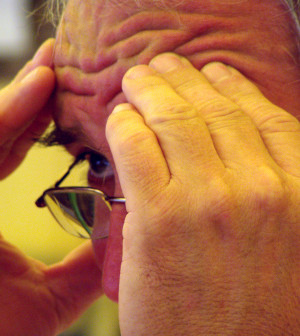- How Daily Prunes Can Influence Cholesterol and Inflammation
- When to Take B12 for Better Absorption and Energy
- Epsom Salts: Health Benefits and Uses
- See What Saffron Can Do for Sleep and Heart Health
- 6 Common Mistakes to Avoid Before Your Physical
- Can Sweating Really Help You Beat a Cold?
- Strengthening Your Relationship: Practical Strategies
- Skip Storing This Everyday Product in the Fridge Door
- Green Tea + B3 Pairing May Boost Brain Health
- Navigating Your Midlife Crisis: Embracing New Possibilities
Newer Treatment May Be Easier on Children With Brain Tumors

A new type of treatment called proton radiotherapy is as effective as standard photon (X-ray) radiation therapy in treating a common type of brain tumor in children, a new study reports.
And the new therapy causes fewer long-term side effects, the researchers said.
“Proton radiotherapy is still not widely available in the U.S. or around the world, but it is increasingly recognized for its potential to reduce the side effects of treatment, particularly in the pediatric population,” study author Dr. Torunn Yock said in a news release from Massachusetts General Hospital.
“At experienced centers, proton therapy has a proven track record of treatment success and safety,” added Yock. She is an associate professor of radiation oncology at Harvard Medical School in Boston.
In photon radiotherapy, a dose of radiation is delivered all along the X-ray beam as it passes through the patient’s body. But in proton therapy, the radiation dose is focused on the target area. This means little or no radiation reaches healthy tissue in front or behind the tumor, the study authors explained.
The new study included 59 children with medulloblastoma — a tumor that occurs in the cerebellum at the base of the brain. The patients were aged 3 to 21, and all received proton radiotherapy at Mass General in Boston between 2003 and 2009.
The patients had already had surgery to remove as much of the tumor as possible. They also all had chemotherapy before, during and after proton therapy, the researchers said.
Of the 59 patients, 12 died from their tumor during the study period and one died from a traumatic brain injury, the researchers reported. Survival and tumor recurrence rates were similar to those that have been reported for photon radiotherapy.
Significant hearing loss occurred in 12 percent of patients three years after proton therapy, and in 16 percent after five years. Previous research shows that significant hearing loss occurs in about 25 percent of patients who receive photon radiotherapy, the researchers said.
The effects of proton therapy on thinking (cognitive) ability were less severe than what has been reported with photon radiotherapy, according to the study authors.
The patients in the study had no heart, lung, digestive, seizures or secondary tumor side effects, all of which can occur with photon radiotherapy, the researchers said in the news release.
Seven years after treatment, hormone level deficits were seen in 63 percent of the study patients, which is similar to that seen with photon radiotherapy, the study authors said.
The study was published online Jan. 29 in The Lancet Oncology.
“Our results indicate that proton therapy maintains excellent cure rates in pediatric medulloblastoma while reducing long-term side effects,” Yock said in the news release.
“While we are currently investigating quality of life differences between proton and photon treatment, I truly believe that — particularly for the youngest children — the ability to offer them proton therapy can make a big difference in their lives,” she concluded.
More information
The American Brain Tumor Association has more about medulloblastoma.
Source: HealthDay
Copyright © 2026 HealthDay. All rights reserved.










